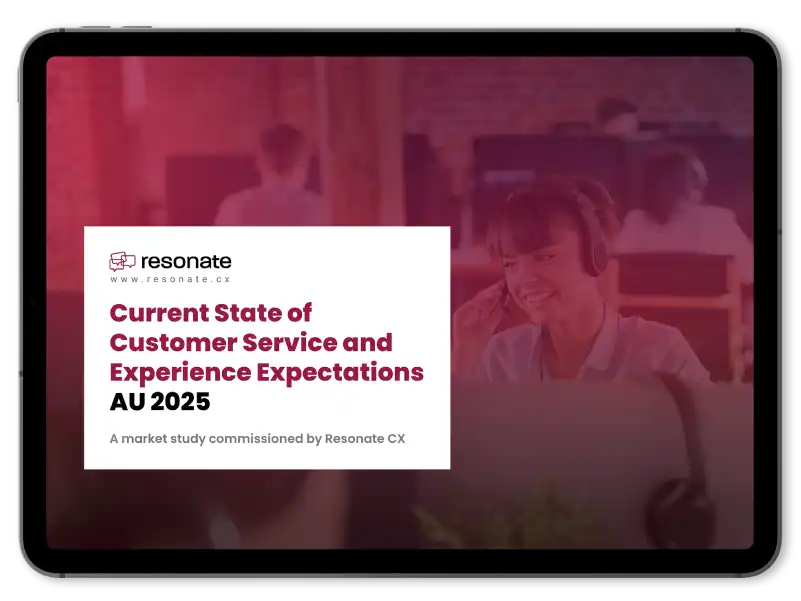TLDR:
- AI Alone is Not Enough for Resolution: Artificial intelligence currently sits at a crossroads in customer service, with only 11% of customers reporting that their issue was fully resolved by AI alone. This failure to resolve complex problems highlights AI’s struggle with delivering the necessary empathy, competence, and complete resolution that customers value most.
- Customers Prefer a Hybrid Model: The future is not choosing between humans or AI, but rather a blend of both, which 58% of customers prefer. This “Human + AI” approach involves using AI for routine tasks while ensuring a seamless, high-quality handoff to a human agent for more complex, emotionally charged issues.
- Adoption is Driven by Low-Stakes Utility: Customers are most open to adopting AI when it is used for low-stakes tasks, such as providing quick answers to simple operational questions or efficiently routing them to the correct department. Companies should focus on using AI to build trust in these simple scenarios, rather than over-promising its ability to handle complex problems end-to-end.
- Speed is a Critical Factor in AI Acceptance: While only a small fraction of customers initially choose AI, patience quickly diminishes, and nearly half of customers are willing to switch to an automated solution after waiting just five minutes for a human. This demonstrates that customer impatience and the desire to save time can serve as a powerful “tipping point” for AI adoption, even among skeptics.
- The Goal is Partnership, Not Replacement: The data confirms that nine out of ten customers still want some level of human involvement, proving that human empathy and understanding remain irreplaceable. Therefore, the successful strategy is creating a cohesive partnership where technology enhances human agents and addresses simple issues, ensuring customers care less about who is behind the screen and more that their problem is solved.
AI in customer service is no longer a vision for the future, it’s arrived. Whether it’s through chatbots, automated phone menus, or virtual assistants, most people have encountered AI in the support journeys. The reaction though, is mixed at best. Some customers are curious, others are frustrated, a few are optimistic, while many remain cautious or skeptical. Unfortunately for AI, it currently sits at a crossroads. It’s great for companies as it promises faster solutions and lower costs, but it keeps stumbling on what customers value the most: empathy, competence and resolution.
However, there is a middle ground that could work for both companies and customers. The future of customer experience isn’t about choosing between AI and humans, it’s about finding the right blend of both.
Emotional Response to AI in Customer Support
Ask customers how they feel about AI in support, and you’ll hear a wide range of emotions. According the our recent report on the Current State of Customer Service and Service Expectations in 2025 in Australia:
- 22% are skeptical or doubtful
- 22% are frustrated by past experiences
- 19% are neutral or indifferent
- 18% are curious and open to exploring
- 11% are excited and optimistic, ready to embrace it
- While a minor 9% admit they are still scared or concerned
This mix tells us something important, that AI isn’t universally loved or hated. Instead, it’s a technology caught between potential and reality. For every customer who finds it helpful, there’s another who sees it as a waste of time.

Customer Service & Experience expectations in 2025 | AUSTRALIA
Discover the moments that make or break first-contact resolution.
Can AI Resolve Support Needs on Its Own?
The strongest proof of this gap comes from actual customer outcomes. In the past three months:
- Only 11% of customers had their issues fully resolved by AI
- 37% said it was partially resolved but they still needed human help
- 28% said the issue was never resolved and a human was always required
- And 23% had never even tried AI support
This paints a pretty stark picture. Only 1 out of 10 customers have had their issues fully resolved by AI. While AI is present, it’s not yet delivering the full resolution customers expect. Worse, some of its biggest weaknesses, lack of empathy, repetitive loops, and inaccurate information, only deepen customer frustration.
What Customers Really Want
Despite the skepticism, the research also reveals a clear opportunity. Customers are not anti-AI, but what they are against is bad AI.
The willingness to adopt AI rises if it can resolve issues with empathy. Reliability and care will drive adoption, not hype. The results of the respondents are not ideal, and shows that people are still skeptical of the new technology.
When surveyed about the openness to AI if the current issues are solved:
- 17% are not at all likely to use it
- 16% are unlikely to use it
- 30% are neutral or unsure
- 25% are likely to give it a try
- And 12% are extremely likely
Customers aren’t looking for a robot to replace humans; they’re looking for a tool that actually solves their problem without making them feel like a number in a system.
Is AI Being Used for the Right Tasks?
As the data suggests, customers are not opposed to AI in principle, they just want it in the right places. The research highlights where AI is most welcome and where it feels like overreach.
Where customers are most open to AI:
- Providing quick answers to simple questions (e.g opening hours, password reset) (42%)
- Guiding them to the right department faster than a long phone menu (38%)
- Suggesting useful information while they wait for a human (30%)
Where customers are less open:
- Letting AI handle complex issues end-to-end without human involvement (22%)
- And 21% of customers see absolutely no value in AI for service tasks
This tells us that adoption will grow gradually, starting with small, low stakes tasks that build trust. When AI proves itself in these areas, customers can grow more open to using it for more important tasks. Until then, companies should realise that overpromising what their AI is capable of is a recipe for disappointment that will only reduce customer trust.
The Hybrid Future: Human + AI
Instead of an either/or debate, the real future of CX is hybrid and the data confirms it.
- 58% of customers want a hybrid model, where AI handles the routine and hands off seamlessly to humans
- 35% prefer a humans only model
- While, a tiny 3% want AI only
The hybrid version can mean two models, AI first with handoff or human first with AI assist
- 32% of customers want AI first with seamless handoff to a human when needed
- And 26% prefer human first with the AI assisting the agent in real time
9 in 10 customers still want some human involvement and these approaches honour what customers want.

The Tipping Point
One of the most interesting findings is how patience plays into AI adoption.
- If offered AI immediately, only 12% choose it right away
- But after just 5 minutes of waiting time, 1 in 2 customers are willing to switch
- By the 10-15 minute mark, the majority of customers would rather take AI than wait any longer
- Still, a minor but significant 23% say that they would wait for a human no matter what
This just shows us how fragile the balance actually is. If forced onto customers too early, backlash is likely. But if AI is used strategically as a welcome alternative to long waiting times, customers may not be as hostile.
Conclusion
The numbers give us a clear picture. Only 11% of customers say AI alone completely resolved their issue, while 37% said it worked partially and that they still needed human help. But when AI actually saves time, usage rises fast, with nearly half of the customers willing to switch after a five minute wait. This tells us that:
- Speed earns permission.
Customers don’t necessarily love AI, but they value time a lot. If AI genuinely makes their lives easier, they’ll adapt quickly. - Resolution builds trust.
AI adoption will only consistently climb only when it starts resolving issues.
At the same time, 9 out of 10 customers still want a human involved when the situation matters. This proves that empathy and understanding remain irreplaceable. AI is here to stay but the jury is still out on how it fits into customer service. The future of customer experience is not about choosing sides, it’s about creating a partnership between humans and AI. When tech and empathy move together, customers will stop caring who’s behind the screen, they will just remember that it worked.









